On Plein Air Painting in Winter > If you haven’t painted in the snow, you’ve missed one of the best plein air experiences available to artists. If dressed right, cold weather painting is a joy not found in any other season of the year.
How to Stay Warm When Painting in Winter
By Sharon Griffes Tarr
Dressing smart (and I don’t mean fashionably) is the key to cold-weather painting. We all know the wisdom of dressing in layers, but for artists who sit or stand in place for several hours at a time, it is only part of the equation. When we are stationary in cold weather, we do not generate heat. Our clothing must take up the slack and keep us warm.
For years, I’ve painted outdoors in all kinds of weather and rarely have been uncomfortable because of the cold. My secret is dressing, year around, for 20 degrees colder than the predicted temperature of the day. Yes, even in summer, standing still for two hours, one can get chilled.
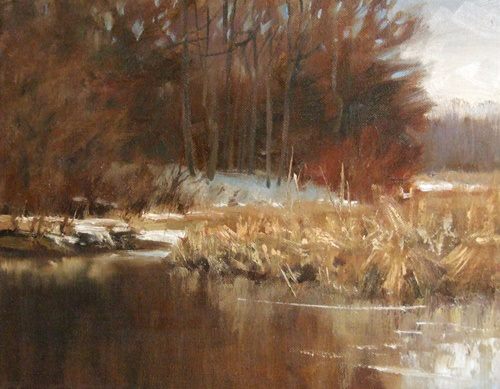
My winter dress includes lightweight long underwear and socks that wick moisture; and a cotton or wool T-shirt and sweatshirt or tightly knitted sweater depending on the temperature. This outfit is topped with a down vest and/or winter coat that covers the fanny. To help keep my core warm, a body warmer patch attached to my long underwear just below the 5th vertebrae on my back does the trick, and hand warmers in pockets are good for when fingers get cold.
Accessories are important as well. I use the thin-knitted one-size-fits-all gloves available in most grocery and drug stores and I keep my hands in my pockets with the warmers when not pushing a brush. My hat is a warm pull-down around-the-ears kitted hat with a small visor to keep the sun out of my eyes. No fashion here, folks … just warmth.
Boots are essential. Forget fashion. Go for hunter’s boots that go to 30 degrees below zero and use foot warmers inside. It also helps to have a piece of dense foam to stand on or a small throw rug. Both will help to keep cold from seeping into your feet from the frozen ground.
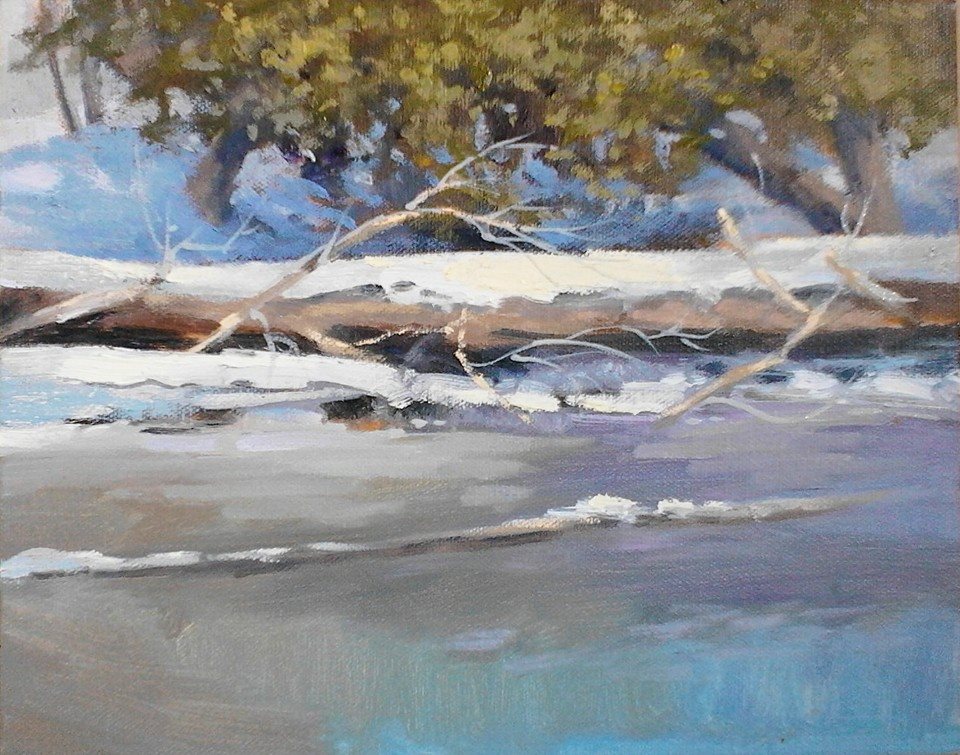
That may seem like a lot of bulky clothing but today’s clothing for hunters and farmers is made for rugged use, is relatively lightweight, and very warm. Again, buy for warmth, not fashion. Ladies, check out the boys and men’s departments. Often their clothing is made for extended outdoor use whereas women’s outerwear is based on fashion and does not sustain cold weather exposure.
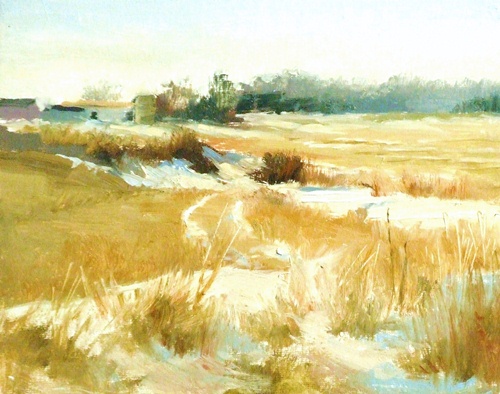
Wind is the most difficult to dress for effectively. It can creep into openings and chill even the best-dressed artist. Frankly, I avoid cold days with high winds. In mild wind, wearing a rubberized or plastic raincoat over your clothing will help. Buy it one or two sizes larger than normal so it will fit over your additional clothing.
I hope to see you in the field this winter. It’s the best time of year to be a plein air artist.
Connect with Sharon Griffes Tarr at www.sgtarr.com.

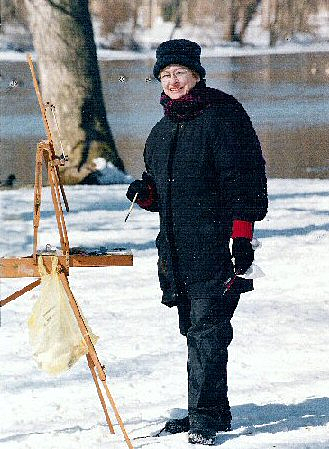
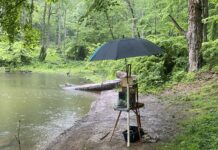
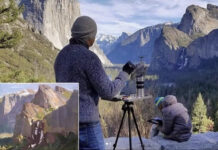
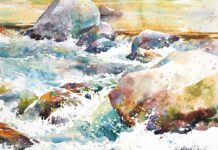
Congratulations! Your article is very useful, and the paintings are beautiful. I need to overcome my hibernation mindset.
Sharon,wonderful article. I loved reading about your dress. I must say,this is not for everyone. I live in central Texas and the temperature at times can be very cold.
On those days,I perfer to do studio work,
Great tips Sharon and I love your work!